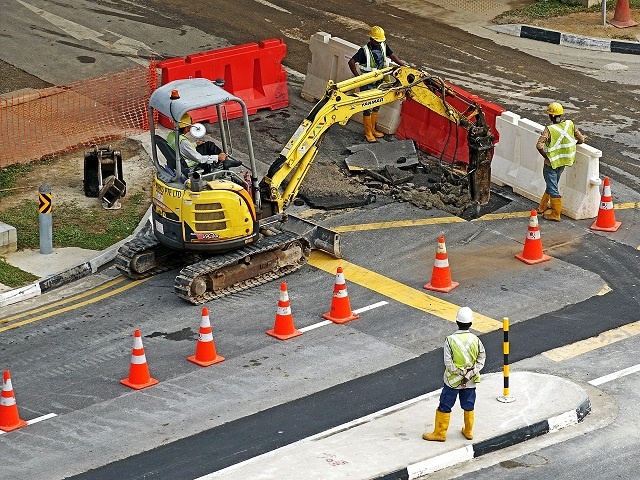Updated December 2025
Have you ever suffered an injury at work? Was the cause a faulty piece of equipment or unsafe workspace?
Every year, thousands of Canadians report job-related illness, injury, and even death. The repercussions of unsafe workplaces ripple through our communities, changing lives forever.
This is such an important issue in Canada that back in 1991, Parliament passed the Workers Mourning Day Act, making April 28 an official Day of Mourning across Canada. Every April 28th, the Canadian flag flies at half-mast on Parliament Hill and on all federal government buildings in memory of those who lost their lives on worksites.
This special day is also meant to remind us of the importance of workplace health and safety—and our mission to prevent work-related accidents and fatalities.
How do we go about keeping this promise? We train occupational health and safety officers to go out, inspect workplaces, provide training, and shut down employers who don't follow the law.
Thinking about becoming a health and safety officer? Take a look at five of the most common violations you'll bust during inspections.
1. Fall Hazards
Working safely at heights demands proper training and safety gear. Health and safety inspectors often see violations on building sites where employers don't have clear fall protection procedures, workers aren't using protective gear correctly (or at all), or training simply isn't provided.
In Canada, more than 48,000 workers suffered falls in 2023 alone. The consequences of these accidents range from cracked ribs and broken bones to death.
 When a health and safety officer busts fall hazards in a workplace, the penalty for the employer can range from a fine to imprisonment (or both).
When a health and safety officer busts fall hazards in a workplace, the penalty for the employer can range from a fine to imprisonment (or both).
In Ontario, a roofing contractor was fined $10,000 and jailed for 90 days when a worker fell 21 feet without fall arrest equipment.
2. Clutter and Spills in the Workplace
Something as simple as a pile of boxes blocking an emergency exit or a puddle of water left in a hallway can cause a serious workplace accident.
Health and safety officers see these kinds of violations all the time—mostly because employers and workers don't see the danger or are too busy to stop and clean up the mess.
But during an emergency when the lights go out, imagine what might happen when workers try to evacuate a blocked exit. Or think about the slip and fall injuries that could result from a spill when workers are rushing from one place to another (like in a busy restaurant kitchen). These are potentially fatal workplace hazards.
3. Exposure to Dangerous Chemicals
Incorrectly stored (or unlabelled) chemical products can cause serious injury to workers. Whether in liquid, gas, or solid form, exposure to harsh chemicals can cause breathing problems, skin irritation, and illness.
These products must be stored correctly, and workers must be provided with the right safety gear when handling them.
Unfortunately, violations of these regulations are fairly common on worksites and are often busted by health and safety officers.
4. Lockout/Tagout Violations
Lockout/tagout is the process of ensuring dangerous machines are properly shut down after use and during maintenance. The purpose is to protect workers from an unexpected surge of energy or startup of a machine.
A lockout device holds the equipment in a safe, off position—and can't be removed without a key.
A tagout device is a warning device that tells workers not to turn on the machine while maintenance is being done.
 Lockout/tagout procedures are extremely important on construction sites, where a lot of heavy-duty machinery and equipment is present. But employees need specific lockout/tagout training to use the tools and procedures correctly.
Lockout/tagout procedures are extremely important on construction sites, where a lot of heavy-duty machinery and equipment is present. But employees need specific lockout/tagout training to use the tools and procedures correctly.
All too often, health and safety officers discover that these procedures are not being followed, leaving workers exposed to serious safety hazards.
5. Emotional/Psychological Hazards
Not all workplace health and safety violations involve physical injuries. In some cases, failure to follow rules and regulations results in serious emotional and psychological harm to workers.
Examples include sexual harassment, lack of respect, an unreasonable pace or intensity of work, and employees who get little (or no) say in workplace conditions and procedures.
Imagine a worksite where employees aren't given enough breaks, get yelled at continuously by a supervisor, and have no opportunities to express their frustration and request changes.
A health and safety officer would report such a violation and demand the employer improve the workload, working conditions, and stress placed upon workers.
Learn More About Occupational Health and Safety Training
Want to fight for workers' rights and bust employers who break health and safety rules? Explore your occupational health and safety training options.
You can complete a health and safety diploma in just 12 months and move straight into an entry-level position at a government agency, insurance company, business, or healthcare organization.
To learn more about training and careers, we recommend speaking with an admissions advisor.
Chat live with an advisor right now, or click below to explore Herzing's Occupational Health and Safety training. We're here to help!







